- Qualcomm Launches Snapdragon 4 Gen 2 Mobile Platform
- AMD Launches Ryzen PRO 7000 Series Mobile & Desktop Platform
- Intel Launches Sleek Single-Slot Arc Pro A60 Workstation Graphics Card
- NVIDIA Announces Latest Ada Lovelace Additions: GeForce RTX 4060 Ti & RTX 4060
- Maxon Redshift With AMD Radeon GPU Rendering Support Now Available
Content and news by Matt Serrano
Dell Releases New Mobile Workstations
It looks like Dell’s catering to all you people who just “WANT MORE.” Today, Dell announced a trio of new notebooks that will push the envelope. The M6400 is Dell’s new 17″ concept notebook, which features 16GB RAM, 1TB of total storage, a dedicated graphics card with 1GB of video memory, and a 100% Adobe RGB color gamut display. Dell’s 15″ M4400 can use 8GB of RAM, and the smaller 14″ M2400 will weigh 4.77 pounds.
These notebooks make use of a “jog shuttle” to provide more accurate control of applications. Beyond that, we only know that these behemoths will debut in Fall of 2008. Until then, where does the line start?

We heard you. Welcome to our slick new concept for the ultimate Dell Precision mobile workstation, destined to be one of the first of its kind and the envy of all those who thought they had a powerful and cool notebook.
Published on August 12, 2008Eight People Purchased Useless “I Am Rich” iPhone Application
On August 5, an application made its way to the iTunes App Store, created by Armin Heinrich, simply titled “I Am Rich.” The application did nothing – merely display a picture of a red ruby to serve as a reminder that the user could afford the $999.99 application. The program was approved by Apple and followed all of the store guidelines, making it fair game for the developer.
Despite the broken English in the description, and the promises of “no hidden function at all,” for some reason, eight people purchased the application to grace their home screens. The sales amassed to $5,600 in revenue for Heinrich, and $2,400 for Apple, who charges 30% of sales to manage the store. That is, until it was removed.
A flaw in the store’s design disallows applications to be placed into a cart. If the prompt for a password is not enabled for purchases, the program is downloaded and the customer is charged shortly after he or she pressed the “Buy App” button. One reviewer on the App Store said, “I saw this app with a few friends and we jokingly clicked ‘buy’ thinking it was a joke, to see what would happen. … THIS IS NO JOKE…DO NOT BUY THIS APP AND APPLE PLEASE REMOVE THIS FROM THE APP STORE.”
Unfortunately for the developer, Apple has yet to contact him about the removal of the application. He says that it is unclear whether or not this will effect his payment, which Apple normally delivers at the end of each month. Some are criticizing Apple for taking down applications without notice, even if they seem to comply with the store’s rules, but others are christening Heinrich a thief.
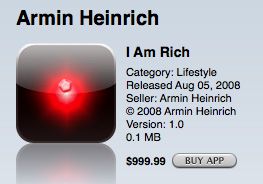
When the iPhone first hit the market in June 2007, those who paid the $499 entry price — and signed the two-year AT&T contract — owned a status symbol. A year later, we have the iPhone 3G, Apple’s speedier, sleeker and, most important, less expensive smart phone, which introduced a section for downloading third-party applications. Now that the phone is affordable enough for a wider audience, a new status symbol has emerged: a seemingly useless application called I Am Rich.
Published on August 8, 2008iPhone Developers Kept Quiet by Apple’s NDA
When the iPhone SDK was first released, Apple instituted an NDA which forced software developers to remain quiet which, at the time, made sense for the company to maintain secrecy – especially with the new 3G iPhone on the way. However, before the App Store was rolled out on July 11, word surfaced that Apple planned to do away with the requirement of secrecy, allowing developers to communicate with one another.
Unfortunately for many, the non-disclosure agreement did not expire. The legal wall that prevented developers from communicating, assisting one another and even creating GPL applications and examples was still visible. This prompted Justin Williams, a developer for Second Gear to create a site called ####ingNDA.com, which takes all tweets from the social micro-blogging site Twitter.com that contain the phrase “####ing NDA” (the expletive version), and congregates them.
William comments, “there is no legal way for developers to talk about they are developing. No way to post tutorials. No way to give code away. It’s hard to interact with other developers and to write code without reinventing the wheel. Normally, you could post [a coding question] on Twitter and get an answer within minutes.” This forces many to re-create the wheel and, in some cases, resort to using an implementation that isn’t as good as what could have been done if they had the help necessary.
Apple has yet to comment about the future of the NDA and whether or not it will be removed as a stipulation for development on the platform.

The iPhone development community is growing rapidly, but Apple’s treatment of some of its biggest supporters is drawing more ire than kudos.
Because of the company’s restrictive non-disclosure agreement (NDA), iPhone developers are legally banned from sharing programming tips, discussing code or asking questions of one another in forums or over e-mail.
Published on August 6, 2008First Nehalem Machine Built
Maximum PC was lucky enough to get the opportunity to head into a secret Intel lab which we can only guess was housed 20 floors below sea-level. In their feature, they attempt to build a rig using an unreleased Intel D58XSO motherboard and showcase the ease and potential snags of building a new system when the chips arrive.
They learned that the actual CPU is much bigger than the older LGA775 chips, and as a result, older heatsinks will not be compatible. Motherboard layouts will also be slightly revised, and some boards with six DIMM slots will be a tight fit for some builders. They reported that the move to tri-channel DDR3 didn’t give a huge performance increase, but since this is a preview board, these findings will likely be slower compare to what we’ll see when the new products are released to the public.
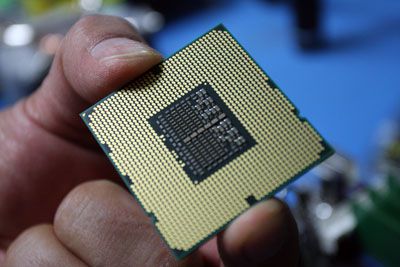
It’s the worst kept secret in the industry: Intel’s next-generation Penryn killer, codenamed Nehalem is just around the corner. We’ve been seeing leaked benchmarks based on early silicon for months, and Nehalem’s Wikipedia page is already packed with unconfirmed specifications. All indications – and this is with more optimizations to come, mind you – is that Nehalem may be a bad mother worthy of having Isaac Hayes pound out a theme song for it.
Published on August 6, 2008GTAIV PC Release Date Announced
With the release of Grand Theft Auto for the Xbox 360, many PC gamers were left waiting for the inevitable Windows release. We now know that the PC version will hit American and European shelves on November 18 and November 21, respectively. Rockstar was sure to add that the new version of the game will include “newly expanded multiplayer just for the PC.”
Among the improvements, PC Grand Theft Auto gamers usually receiver better aiming with gunplay, smoother frame rates with updated hardware, and an active modding community that cannot be attained with the console releases.

The long-rumored PC version of Rockstar’s open-world crime life simulator Grand Theft Auto IV will hit North America on November 18 and in Europe on November 21, the developer announced today.
Published on August 6, 2008Original Wii Plans Finally Realized
With the release of Wii Music and the Wii Motion Plus accessory, Miyamoto’s original vision of the Wii will have been realized and implemented, says Nintendo president Satoru Iwata. The first conceptions consisted of the Wii console itself, including Wii Sports, Wii Fit, Wii Play, and the recently released Wii Zapper and Wheel peripherals. Iwata also commented that “[Miyamoto] was saying that he needs to think up more ideas now.”
With this milestone, Satoru Iwata added that the company will slow down with releasing new accessories, and that no new ones are planned for the moment. Given Nintendo’s history, I’m sure they can make up for it by releasing new colors come the Holidays. He finally added that the Wii Motion Plus, though it does not have an official release date, will be priced ” very affordably.”

Celebrated game designer Shigeru Miyamoto’s original plans for the Nintendo’s motion-oriented Wii will be entirely realized with the fall release of Wii Music, Nintendo president Satoru Iwata revealed.
Published on August 6, 2008Brazilian Hackers Turn to Twitter
This may not seem like surprising news, considering hackers tend to hang out where they are sure to get the most eyeballs, but the issue itself is of enough concern to warrant forewarning. Dmitry Bestuzhev of Kaspersky Labs has done some research and uncovered a Twitter profile which promises a pornographic video, but links to a site with a fake Adobe Flash-looking update which is required to view the video. This update, of course, is malware in disguise which installs 10 trajans that are tailored to look like MP3 files.
The attack is dangerous because of a few key reasons. First, it’s inexpensive to do. Bestuzhev goes on to say that the bad guy only needs a server and a few purchased trojans. Second, public Twitter profiles can be seen on the main site and are indexed by Google and other search engines. This means that the the more popular the fake profile is, the more likely it is to be linked to one from a search result.
The concept of Twitter makes these security concerns more real. Because there is a 140 character limit, users often resort to avoid posting in proper English and use sites like TinyURL to share web pages with their followers, which increase the likelihood of someone clicking a link by mistake. Even if this example is one of the only attackers out there, the reality is this trend is one that can certainly continue.
![]()
Social websites like Facebook and MySpace have attracted a great deal of attention as targets of opportunity for phishing scams, but they are scarcely the only two social networking sites. New information suggests that hackers have tuned in to the newfound popularity of microblogging, and are at the very least evaluating Twitter as a potential target.
Published on August 6, 2008$12 Computer Based on Apple II in Development
A group of designers are developing an inexpensive computer for use in developing countries based on the now archaic Apple II computer. The idea which, according to the Boston Herald, was pitched by a handful of graduate students involves updating the old technology to provide an opportunity for unfortunate people to learn how to use computers.
Derek Lomas provided the explanation, “If you just know how to type, that can be the difference between earning $1 an hour instead of $1 a day.” Even if the computer manages to expose children to computers at an early age, the project would have already accomplished more than enough for future generations.
The team also hopes to allow Internet access through cell phones, and include memory so users are able to write and run their own programs. Other Apple II aficionados have been recruited to program for the computer, and nonprofit organizations in foreign countries have already expressed an interest in ordering them.

Derek Lomas, Jesse Austin-Breneman and other designers want to create a computer that Third World residents can buy for less than you probably spend on lunch.
“We see this as a model that could increase economic opportunities for people in developing countries,” said Lomas, part of a team that’s trying to develop a $12 computer at this month’s MIT International Development Design Summit. “If you just know how to type, that can be the difference between earning $1 an hour instead of $1 a day.”
Published on August 6, 2008Steve Jobs Acknowledges MobileMe’s Flaws, Reorganizes Leadership
In an internal e-mail sent to Apple employees last night, Steve Jobs discussed MobileMe’s rough fate, and gives his input on what he believes should have happened. Jobs said that the service needed more testing, and the service could have been rolled out slowly (one feature at a time) instead of tiring the staff with getting the iPhone 3G, iPhone 2.0 software and the App Store out the door.
The email also said, according to Ars Technica, that the MobileMe team, and all Internet-related services at the company, will report to Eddy Cue. Cue will then report directly to Steve Jobs. It is not clear what happened to the the rest of the staff on the team, however.
Jobs finally said, “And learn we will. The vision of MobileMe is both exciting and ambitious, and we will press on to make it a service we are all proud of by the end of this year.”
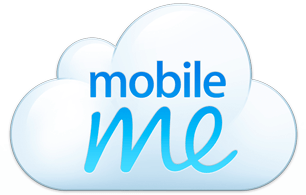
In an internal e-mail sent to Apple employees this evening, Steve Jobs admitted that MobileMe was launched too early and “not up to Apple’s standards.” The e-mail, seen by Ars Technica, acknowledges MobileMe’s flaws and what could have been done to better handle the launch. In addition to needing more time and testing, Jobs believes that Apple should have rolled MobileMe’s services out slowly instead of launching it “as a monolithic service.” For example, over-the-air iPhone syncing could have gone up initially, then web apps one by one (Mail, Calendar, etc.).
Published on August 5, 2008Cablevision Wins Network DVR Appeal
In March, 2007, Cablevision was sued by “several Hollywood studios and TV networks” when the company tried to introduce a networked DVR service. A New York court ruled against Cablevision when the judge came to the conclusion that the service would have been infringing to the plaintiff’s copyright. After the defeat in court, Cablevision appealed to the federal court.
Surely enough, earlier today the U.S. Court of Appeals for the State of New York ruled against the earlier decision, believing that the company’s proposed networked-DVR service could only hold the same concerns as a local DVR, even if the content is located on Cablevision’s servers.
The technology would provide the ability for customers to have a DVR-like service without having to upgrade to new hardware. In the future, this could mean that customers wouldn’t have to rent a set-top box at all, with the availability of cable card compatible televisions and a subscription to Cablevision’s service.
![]()
On Monday, the U.S. Court of Appeals for the Second Circuit in New York, ruled that Cablevision’s proposed new service that allows movies and TV shows to be recorded on remote storage servers in Cablevision’s network “would not directly infringe plaintiffs’ exclusive rights to reproduce and publicly perform their copyrighted works.” The appeals court overturned a lower court’s decision that was issued in March 2007.
Published on August 4, 2008HeadRoom Announces The Audiophile Desktop
Last week, HeadRoom, a popular virtual retailer which specializes in audiophile gear, released what seems to be one of the most insanely expensive and probably one of the best sounding setups ever. The “Audiophile System,” which is said to provide “exquisite aural experience” while maintaining a practical and accessible workspace.
Separating you from your money gets you a pair of speakers, headphones, an AMP, cables and stands, which doesn’t sound like a lot until you realize that the base configuration starts at $3,631.50 along with shipping. The produces included have been available from HeadRoom and other manufacturers for some time now, but if you’re in the need for a setup that will surely provide you with audio bliss, look no further.
The package may be expensive, but as any plastic-holding audiophile will tell you, high-end gear will cost you, but those with golden ears will surely hear the difference. HeadRoom also gives you the freedom to pick and choose parts on an individual basis, so you can remove things you may not need, such as the $500 speaker stands.

Audio enthusiasts who sit in front of a computer all day and yearn for a high quality listening experience should turn off their computer speakers and listen to this. HeadRoom Corporation (a Bozeman Montana based firm) has recently redefined high-end computer workstation listening with the introduction of their Audiophile Desktop System which delivers what can only be described as a miniature high-end listening room experience on your desk.
Published on August 4, 2008Defective NVIDIA Notebook GPUs Outed by Manufacturers
Back in the beginning of July, NVIDIA’s stock tumbled because the company released information saying “significant quantities” of their laptop GPUs were defective. The problem essentially resulted in higher than normal failures in production, and over heating from the company’s GPUs that were included in notebooks which were already shipping.
Now, Dell and HP have released a list of affected machines, which include the GeForce 8600M and 8400M, the GeForce Go 7000 and 6000, as well as the Quadro NVS 135M and the Quadro FX 360M. There is another potential problem in the fact that this isn’t a definite list, and more GPUs may have the same issues; only NVIDIA knows which ones are affected.
Something needs to be done at NVIDIA’s camp, whether it include offering a recourse for computer manufacturers or a solid driver fix, if more problems show up down the road with pertaining to this heat issue, the company may have a bigger problem to maintain.
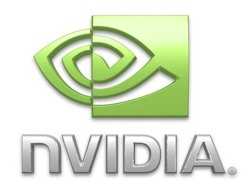
So now that HP’s joined Dell in releasing information on which laptops have those defective NVIDIA GPUs, we can sort of piece together which chips are faulty — and just as had been rumored, it looks like basically every Geforce 8600M and 8400M chip is affected. That’s not good news for NVIDIA, which has been saying that only “previous-generation” chips were problematic — unless the chipmaker is planning on updating the hugely popular 8×00 series sometime, say, now, that’s not exactly true, now is it?
Published on July 31, 2008Psystar Hires Experienced Lawyers to Face Apple
Instead of backing down and ceasing to sell their OS X bundled Open Computers, and recalling every one sold as part of Apple’s request, Psystar has hired three lawyers to represent the company, Colby Springer, Robert Yorio, and Christine Watson. Both Yorio and Springer have experience defending another company in court against Apple with the Burst.com lawsuit, when they forced Apple to settle with $10 million out of court.
Apple charged Psystar with allegations of copyright and trademark infringement, as well as “breach-of-contract, unfair-competition, and violating the Mac OS X end-user license,” according to AppleInsider. This case could be an important one in the technology industry because it relates to the legal validity of user license agreements in court.
In this legal battle of David versus Goliath, it would seem that Apple has the upper hand as far as the facts go. Still, with the determination and resolve Psystar has shown thusfar, this contest could turn into a real struggle for the hardware giant.

A pair of attorneys representing Psystar in its legal bout with Apple are already familiar with the Mac maker, with whom they’ve clashed before and came out on top.
Published on July 31, 2008Microsoft Unveils the Mojave Experiment
Microsoft finally released information about the company’s new advertising campaign, called the “Mojave Experiment.” The main idea of the ads, primarily designed to compete with Apple’s Get a Mac ads, is to conduct blind tests with people who are told they are seeing features from a new operating system from Microsoft called Mojave. The ruse, which is finally uncovered by the end of the ad, is that this new operating system is in fact Windows Vista in disguise.
The campaign seems to take an effective approach at marketing the operating system without attacking the company’s competition. it’s hard to deny that there is a lot of misinformation and pure speculation from potential customers who haven’t even tried the operating system, but hold their negative opinions solely based on what they’ve heard from others. It will be interesting to see whether or not the ads have a prominent effect on Apple’s sharp increase in market share.
However, the advertising blitz doesn’t end there. Not long ago, Microsoft said they were planning on $300 million to combat Apple’s ads. Mojave, which is excluded from that estimate, will be the first sign of Microsoft fighting back.
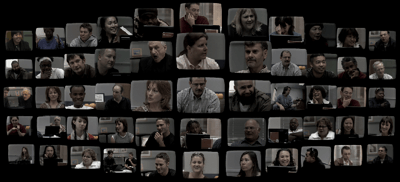
What do people think of Windows Vista when they don’t know it’s Windows Vista? We disguised Windows Vista as codename “Mojave,” the “next Microsoft OS,” so regular people who’ve never used Windows Vista could see what it can do – and decide for themselves.
Published on July 30, 2008Turtle Beach X3 Xbox 360 Headset
Let’s face it… the headset included with the Xbox 360 leaves a lot to be desired, which is why third-party companies come along and release their own products that aim to blow it away. We are taking a look at one such headset today, in the form of the Turtle Beach X3, and answer the question of whether or not it’s worth its ~$90 price tag.
Published on July 28, 2008Steve Jobs Clears Health Issues with Reporter
In a conversation with New York Times’ reporter Joe Nocera, Steve Jobs discussed his current health off-the-record. The issue of Jobs’ health has been a troubling question for investors and speculators for the past few months over the concern that his rare form of pancreatic cancer may have returned, putting the company at possible risk.
Nocera admits in his post – though he is unable to give specific details – that Jobs’ condition is more than a “common bug” that certain Apple spokespeople have used in their dismissals when questioned about the chairman’s health, but it is not as serious as the pandemonium was making it out to be, and certainly not life-threatening.
Steve Jobs is said to have made the call when he was outraged about Nocera’s comments that Steve’s cancer may have resurfaced. He reiterated that his health was a private matter, and seems to be of the belief that he doesn’t have a reason to disclose it. Though there is some debate whether or not exposing possible health issues will affect the company and its stock price, given Steve Jobs’ role and influence, he does have some say to privacy.

After receiving multiple statements from Apple’s press relations that simply echoed the company’s official position that Jobs’ health “is a private matter,” the New York Times‘ Joe Nocera received a personal phone call from Steve Jobs that appears to have settled some of the doubts about his physical condition.
Published on July 28, 2008Apple Seeds iPhone 2.1 to Developers, Adds New Features
Apple fans deterred from the iPhone 3G because of some of the device’s shortcomings will be happy to know that the company has handed out a beta build of the iPhone’s 2.1 software. The new release will bring improvements to the phone’s GPS capabilities and introduce the push notification service for developers.
The iPhone’s CoreLocation service adds support for directional GPS and the ability to track speed, both of which are ingredients for a turn-by-turn application. These new features will theoretically give Apple, and third-party developers the power to create more accurate and more feature-rich applications.
The push service, which was formally announced at WWDC 2008, will allow developers to send notifications to iPhone handsets without running background processes, Apple’s solution to save battery life and increase performance on the phone. The service was slated for a September release, so the firmware will likely be made available to customers by then.
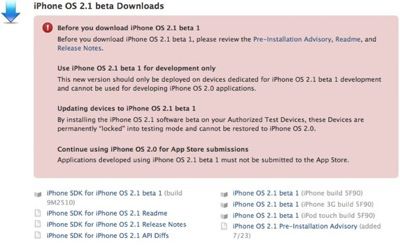
Those with hands-on access to the beta 2.1 code at Gear Livenote that Core Location can now recognize the cardinal direction of an iPhone with GPS as well as its velocity, both of which are ingredients necessary to providing turn-by-turn directions.
Separately, AppleInsider has also confirmed that Apple is implementing a rough version of its background push notification service in the 2.1 firmware.
Published on July 25, 2008Yahoo! to Take DRM Music Servers Offline
Last Wednesday, Yahoo contacted customers telling them that the company would no longer provide support for the service, and that customers would no longer be able to play their purchased music after September 30. Microsoft made a similar move to turn off its MSN Music service earlier this year, but postponed the shutoff to 2011.
Yahoo advised customers to make an effort to burn their protected music to a disc, effectively removing the copy protection, but such an action reduces audio quality and leaves customers with an impaired version of the purchased product. In an ultimate slap in the face, Yahoo reminds customers they can still (re)purchase their favorite songs from the newly-partnered Rhapsody download service.
The fear that your music can suddenly stop working certainly illustrates one of the major problems with DRM. The fact is, the users bought music from these services purely out of convenience, and turning them off enrages loyal customers and makes them even more unlikely to buy music in digital form online again. Even though Yahoo isn’t performing as well as it could, freezing new purchases and keeping the server online would have sufficed.

This afternoon, Yahoo alerted customers of its erstwhile downloadable music store that it would no longer provide support after Sept. 30 (download the cheerful e-mail here). The upshot: starting Oct. 1, said customers won’t be able to revive frozen tracks or move working ones onto new hard drives or computers, because Yahoo won’t be providing any more keys to the songs’ DRM wrappers. But hey, they can always buy MP3 versions from Yahoo’s new partner Rhapsody!
Published on July 25, 2008Windows Home Server Power Pack Update Now Available
Many users of Microsoft’s Windows Home Server software were affected by numerous bugs that many considered to impair their products’ usefulness, such as the data corruption bug and the lack of 64-bit support, but Power Pack update which we previously reported on has finally fixed those issues, and more.
Other fixes introduced include “backup of home server Shared Folders, improvements to remote access, more efficient power consumption and better performance.” Hopefully, this release will prove to be more stable and better received with users. The blog post goes on to say that hardware partners will update their products to the new version, and HP will release a software update that will include the Power Pack and extra functionality.
_2.jpg)
The team is pleased to announce that Windows Home Server Power Pack 1 has been released to manufacturing (RTM) and is now available on the Microsoft Download Center!
The English version is available now and German, Spanish and French versions will be available on the Download Center soon. Windows Home Server customers who don’t download it on their own will receive Power Pack 1 via Windows Update in August, and the new Chinese and Japanese versions will RTM in August, too.
Published on July 21, 2008Ubisoft Caught Distributing No-CD Crack for Own Game
Someone at Ubisoft somehow managed to publish a patch for their Rainbow Six Vegas 2 game at Fileforums.com, apparently to help users who were having trouble with copies of the game that were downloaded from the Direct2Drive service. Hilarity promptly ensued.
As it turns out, the file that was made available was a no-CD crack created by the “Reloaded” group, which is usually associated with pirating games, including Ubisoft’s own. Users launched hex editor programs to check the file’s contents, and verified that the crack was created from Roloaded, but the actual origin of the file and how it was uploaded remains unknown.
In the unlikely, but possible chance that the crack was published by a rogue employee, I’ll tip my hat to you. Even if the true motives have yet to be discovered, more games should adopt a means to avoid using CD checks to combat piracy, because they are simply ineffective and the people who were unfortunate enough to have problems with their downloads should be reimbursed in some way.

Bizarrely, Ubisoft seems to have been caught distributing a ‘no-CD’ crack produced by a pirate group for one of its own games.
A user named Twingo on the site Fileforums.com pointed users in the direction of a crack made available by Ubisoft for the PC game Rainbow Six Vegas 2.
Published on July 18, 2008Older Entries
Newer Entries
Copyright © 2005-2025 Techgage Networks - All Rights Reserved.
About Us | Advertise | Terms & Conditions | Privacy Policy




